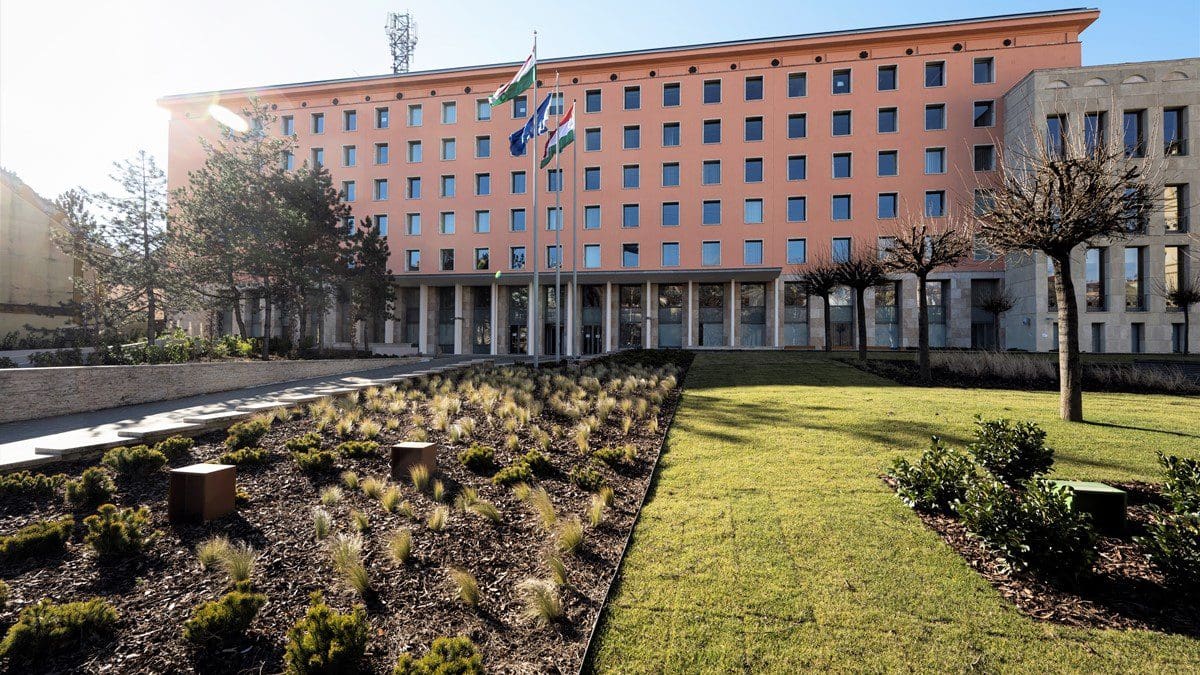Stock exchanges are an essential institution of modern economy and trade; they are the ‘market of markets,’ the place where supply and demand meet. Today marks the day when the Budapest Stock Exchange was reopened 33 years ago, on 21 June 1990.
Historically, the establishment of the Pest Commodity and Stock Exchange dates back to the pre-dualist era.
In 1860, Emperor Franz Joseph I of Austria and King of Hungary issued a decree mandating the establishment of commodity exchanges in the major cities of the Habsburg Empire. As a result, the Pest Lloyd Association was commissioned to create a stock exchange plan, which not only included a commodity exchange but also envisioned the establishment of a stock exchange.
This commission was not accidental, as the Lloyd Association had already established the first Grain Market and Wine Market in 1853, which essentially functioned as commodity exchanges for wholesale grain and wine trade.
The Pest Commodity and Stock Exchange commenced operations on 18 January 1864,
in the building of the Lloyd Association. At its inception, it listed 17 shares, one bond, 11 foreign currencies, and one bill of exchange. On 24 February 1868, the exchange absorbed the Grain Market, but its real upswing occurred in the 1880s, under the name Budapest Commodity and Stock Exchange, following its recovery from the stock market crash originating in Vienna in 1873. In 1889, the quotations of the Budapest Stock Exchange were also published on the stock exchanges in Vienna, Paris, London, and Frankfurt.
All of this was closely related to the growth of Hungary’s economic weight and its integration into European economic life. It was stipulated during the Austro-Hungarian Compromise that Austria’s public debt would be repaid jointly by the two countries in a 70:30 ratio, but by the end of the century, the quota assigned to Hungary was raised to 40 per cent. The economic stimulation was supported by significant railway developments and investments, the birth of new private companies, as well as the establishment of the financial and banking system.
In 1873, the stock exchange was moved from the Lloyd Association’s Danube-side headquarters to a building located at the corner of today’s Szende Pál and Apáczai Csere János Streets. Then from 1905, until its liquidation in 1948, it occupied the Stock Exchange Palace designed by Ignác Alpár, located at the Liberty Square.
By the beginning of the 20th century, the Budapest Commodity and Stock Exchange had become Europe’s leading exchange in grain trading,
and its annual securities turnover reached 1 million units in 1913. The stock exchange closed during World War I, and during the Hungarian Soviet Republic, even its building was confiscated. It also suspended its operations during the Great Depression.
After the nationalisation of industrial enterprises under Communist rule, the stock exchange was dissolved, and its assets became state-owned.
The stock exchange reopened on 21 June 1990, at the Trade Centre in Váci Street
with 41 founding members and a single listed stock, that of tourism agency IBUSZ, following nearly a year of operation of the grain section of the commodity exchange since 18 July 1989. The stock exchange played a significant role in the privatisation of major state-owned companies such as MOL, Domus, Globus, and Richter. The most significant number of stock listings and highest market activity occurred in 1999-2000 when 16 new companies were listed on the exchange.
Currently, the Xetra trading platform connects the listed Hungarian companies and private enterprises with the stock markets of 18 European countries. In July 2002, the stock exchange transformed into a closed joint-stock company, with majority ownership initially held by Austrian banks. Since the autumn of 2005, commodity trading has also taken place on BSE. Since 2005, the Hungarian National Bank has been the qualified majority owner of BSE. Since 2022, the Budapest Stock Exchange has been headquartered in Krisztina Boulevard in the 1st district.
BSE is a member of the World Federation of Exchanges and the Federation of European Securities Exchanges. It is the second-largest stock exchange in Central and Eastern Europe, and its stock index, the BUX, reacts to almost every global economic event. BSE is committed to raising the level of financial and entrepreneurial culture. Since 2017, BSE and the Pénziránytű (Money Compass) Foundation have been organising a four-week-long competitive game for high school students. During the game, participants can make decisions about investing a virtual six million forints and 22 stocks based on real-time stock indices. The adult population can also familiarise themselves with stock trading through numerous interactive simulations.








